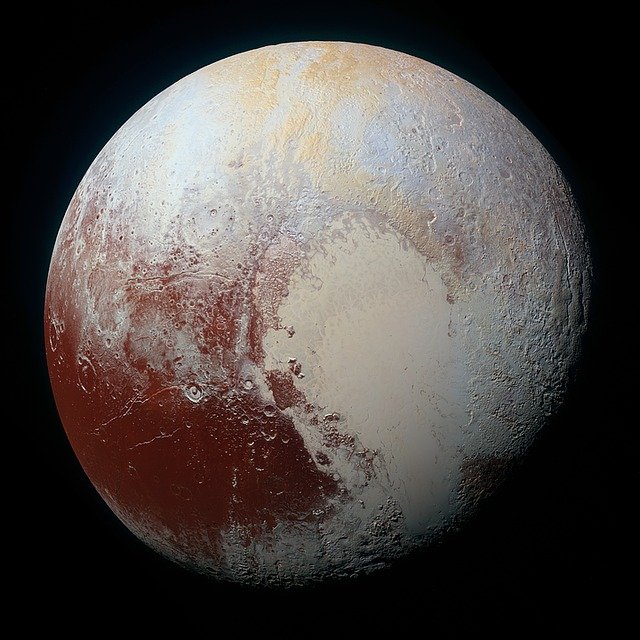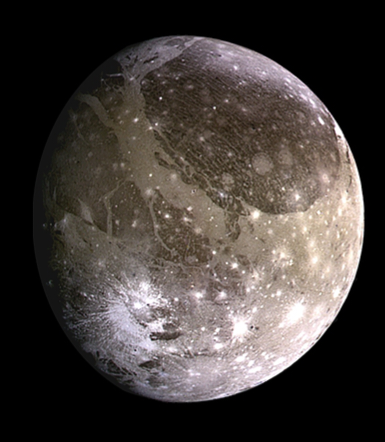*This post may contain affiliate links. This means we may make a commission if you purchase an item using one of our links*
The main differences between Pluto and Ganymede would be that Pluto is a dwarf planet with 5 moons whilst Ganymede is more than 2 times its diameter making it the largest moon in our solar system has no moons orbiting it and Ganymede is also the only moon observed to have a magnetosphere which Pluto does not have.
There are numerous other differences between the two so, continue reading for a more detailed look at each celestial body along with their similarities and unique features.
What Is The Planet Pluto?
Table of Contents

In the past Pluto was the 9th farthest official planet in our solar system however, in 2006 after many debates between astronomers, the International Astronomical Union officially downgraded it to a dwarf planet.
The reason for this downgrade at the time was primarily down to Pluto simply being very small when compared to every other planet and even the moons orbiting these planets. Pluto’s dwarf status is debated still to this day but, for now it still remains under this dwarf bracket for a planet
Its diameter for example is only 2,370km, which is a third of Earth’s Moon. With that being said, despite the significant size discrepancy Pluto shows, it still does have more moon like objects orbiting it than Earth and I’m not saying just one more.
In total this terrestrial dwarf planet has 5.
Pluto’s atmosphere consists mostly of molecular nitrogen whilst molecules of methane and carbon monoxide have been observed also. As for its surface, it consist mostly of frozen nitrogen, methane, and carbon monoxide ices.
One of Pluto’s most unique characteristic is that Charon (its largest moon) is tidally locked to it and vice versa, which means that the two essentially orbit each other.
In essence only one side of Charon and one side of Pluto surface will face each other at any given time.
Pluto’s temperature is between -222 to -232 degrees Celsius based on how close it gets to the Sun when orbiting it, whilst its core temperature isn’t anything too special sitting around 500 – 1,000 degrees Celsius.
The main reason it’s as cold as it is and has a relatively cold core in comparison to the other planets would be, which is mostly down to its size. A larger size would mean more mass could be compressed at the center which would produce more heat at the core.
Pluto’s orbit is also different from the other main plants in our solar system, following an elliptical orbital path as opposed to the circular path the others take. As a result of its distance from the Sun, Pluto will complete each one of these elliptical cycles around once every 247.78 years.
Even its rotational cycle is very slow, where one cycle is completed in 157 hours. Another interesting fact is the Pluto’s axial tilt is almost on its side at 57 degrees, similar to Uranus.
What Is The Moon Ganymede?

Ganymede is the largest of the Galilean moons – and the largest moon in our entire solar system – first discovered on 7th January 1610. The surface of this icy world is frozen and covered by two main types of landscape: young, light regions and old, crater-filled terrain. And these darker areas seem to contain a number of organic materials.
Using the Hubble Space Telescope, astronomers have found evidence of an oxygen-based atmosphere. Still, it is far too thin to support any living organisms that we know of. Based on this, it’s unlikely that Ganymede hosts life as we know it.
Estimates place Ganymede at around 4.5 billion years old (the same age as its planet, Jupiter), and its average distance from the Sun is approximately 778 million km.
Its diameter is 5,268km, making it larger than the planet Mercury. Despite this, Ganymede only possesses half the mass of Mercury, so it is still classified as a low-density object.
Ganymede takes seven days to orbit its planet at an average distance of 665,00km, and the temperature varies from minus 112 to minus 193 degrees Celsius.
Among the fascinating features of this ice moon is its magnetosphere. While many planets possess a magnetosphere, no other moon in our solar system shares this trait.
Measuring the changes in the magnetic fields of Ganymede and Jupiter allowed scientists to predict that salt water lies beneath the surface of this freezing world.
However, this is insufficient to support life when you factor in the other elements of this giant moon. In contrast to Europa, the rocky layer of Ganymede is not directly below the ocean, so life would have a difficult time forming both above and below the ice.
In addition, the thick layer of ice on the moon’s surface would make internal, water-based life challenging for scientists to detect.
How Are Pluto And Ganymede Similar?
Pluto and Ganymede do share a few similarities between themselves, which includes the following:
- Both have a hotter central core.
- Both have a rocky, terrestrial surface.
- Both are spherical in shape.
- Neither have rings surrounding them.
- Both are tidally locked to another entity.
- Both have atmospheres that are negligible in comparison to Earth.
- Both orbit their celestial body in an elliptical pattern.
Differences Between Pluto And Ganymede
In regards to the differences between the two, they include the following:
- Ganymede is the bigger of the two with a diameter of 5,268km compared to Pluto’s 2,370km.
- Ganymede has a noticeable magnetic field whilst Pluto has little to no magnetic field activity.
- Pluto is a dwarf planet as it has 5 moons orbiting it whilst Ganymede has 0 moons orbiting it.
- A day on Pluto takes 157 hours whilst a Ganymede day is 7 and 3 hours.
- It takes Pluto 247.78 years to orbit the Sun whilst Ganymede orbits the Sun in 12 years and orbits Jupiter in 7 days and 3 hours as it is tidally locked to the gas giant.
- Ganymede has an axial tilt between 0 – 0.33 degrees whilst Pluto’s is far more prominent at 57 degrees.
- In regards to temperature, Ganymede averages around -112 to – 193 degrees Celsius whereas Pluto has an average temperature of -222 to -232 degrees Celsius.
- Ganymede’s core temperatures is around 1,226 – 1,426 degrees Celsius whist Pluto’s core is between 500 – 1,000 degrees Celsius.
- Pluto’s gravitational strength is 0.62 m/s² whilst Ganymede’s is 1.428 m/s²
- Ganymede has a density of 1.94 g/cm³ compared to Pluto’s 1.88 g/cm³.
- In regards to mass, Pluto’s is 1.309 × 10^22 kg whilst Ganymede’s is 1.48 × 10^23 kg.
Summary
Despite the fact Ganymede is the bigger than Pluto and even has a magnetosphere, it is still officially a natural satellite whereas Pluto was initially a recognised planet and now a dwarf planet.
There are numerous other differences between the two such as the length of their days, how long it takes for them to orbit the Sun and more but, commonalities are still present, such as the general terrestrial composition, the lack of rings and more.
Ultimately Pluto and Ganymede are very different from one another and that has been recognised more so recently as a result of the New Horizons mission in 2015.

